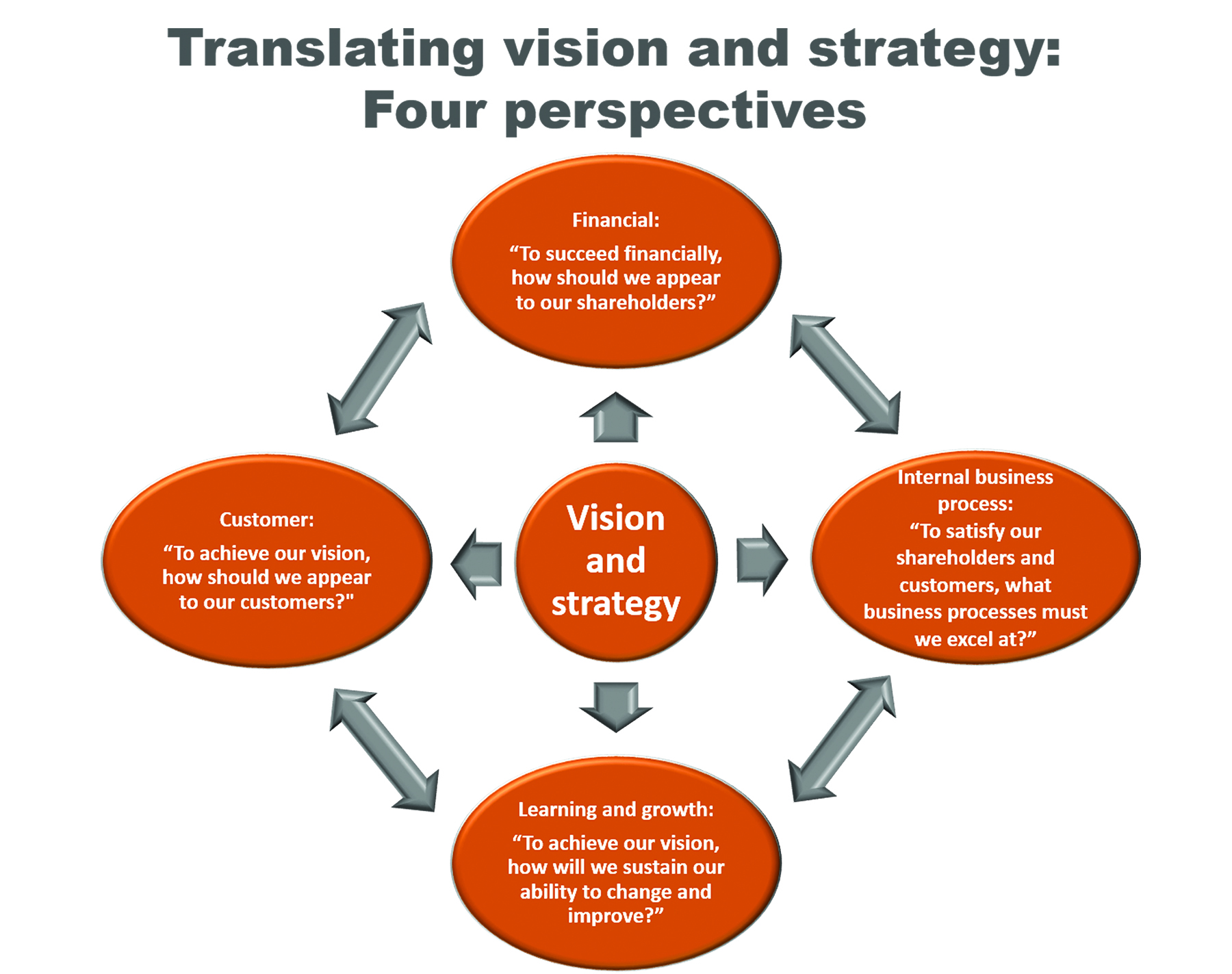
By Generation Next Governor at Large
Ian Simpson, marketing analyst,
VMAC
Published in the July 2015 issue of Generation Next Edition.
“Marketing is the whole
business seen from the point of view of its final result, that is, from the
customer’s point of view.”
– Peter Drucker, founder of modern management
theory
All too often, managers think
of marketing in terms of tactical activities such as sales, advertising, and
promotion. This fallacy leads many organizations to believe that marketing is an
activity designed to support sales by selling more of the company’s products and
services.
The goal of marketing is to
create a product that sells, not to sell a product.
Marketing and the balanced
scorecard
Using frameworks like the balanced scorecard can allow
you to begin to clearly articulate your marketing strategy.
The balanced scorecard is a
strategic planning and management system that is used extensively in business
and industry worldwide to align business activities to the vision and strategy
of the organization, improve internal and external communication, and monitor
organization performance against strategic goals.
The balanced scorecard
develops a foundation for your marketing strategy by focusing on four specific
areas:
- Customer
- Internal business process
- Learning and growth
- Financial

Translating vision and strategy: Four
perspectives
While the value from intangible assets, like customer
loyalty, is indirect – it is known that improvements in intangible assets affect
financial outcomes through chains of cause-and-effect
relationships:
- Investments in employee training lead to improvements in
service quality
- Better service quality leads to higher customer
satisfaction
- Higher customer satisfaction leads to increased customer
loyalty
- Increased customer loyalty generates increased revenue
and margins.
To achieve internal
excellence, you have to ask what business processes you excel at internally to
deliver an excellent product. How are you creating customer
value?
Customers in your parts
department likely tell you what they want and need, and having customer service
that goes above and beyond is imperative to succeed in today’s highly
competitive market. According to customer feedback, here are the five most
critical items to running an effective parts department:
- Short lead times
- Accurate shipments
- Quick and effective communication
- Caring and competent staff
- Good value for the price
Focusing on these elements
fosters internal excellence and will allow you to create customer value.
Market segmentation - growing your business and
measuring success
Marketing also involves
strategic analysis, which provides the foundation for the success of its
tactical elements. You must identify the key source of value for target
customers, the company and its collaborators. Without a clearly articulated
strategy, tactical decisions are a shot in the dark.
The concept of targeting
involves identifying customers for whom the company will optimize its offering.
How do you go about setting up segments in your market for parts and services
programs?
Customers vary in two main
aspects:
- Their needs and resources
- Their readily observable characteristics
To begin to understand their
differences, you need to segment your customers into smaller groups that have
similar needs and wants. For the work truck industry, get started by breaking
your customers into three basic segments:
- Prime product population/ purchases
- Parts purchases
- Service purchases
Next, evaluate the potential
business opportunity available from each customer in your territory. Parts and
service is all about the prime product, for us here at VMAC.
Other important information
includes:
- The type of vehicle that they own
- The application in which the vehicle works
- The hours/miles that is put on the equipment each
year
The better job you can do at
determining usage rates, the better job you can do at identifying who should
service their equipment. Further, the tougher the application that the vehicle
works in, the higher the parts and service consumption becomes (e.g., if you are
running a service truck in the Albertan oil sands, your truck is going to take a
real beating).
For our vehicle-mounted
compressor division, we could look at vehicle population as an important
segment:
- Small (S) – 1-3 vehicles
- Medium (M) – 4-12 vehicles
- Large (L) – 13-24 vehicles
- Fleet (F) – 25+ vehicles
However you split this
segment, it is important to try to have these segments of roughly equal
percentages. This will allow you to address your customers on a more customized
level and address their individual needs.
Next, by looking at the
purchase history of each of your customers, you can begin to identify the
relationships you currently have with your customers using a simple ABCD
approach. For parts purchases:
- A is $48,000 and up
- B is $12,000 to $47,999
- C is $2,400 to $11,999
- D is $0 to $2,399
For services
purchases:
- A is $20,000 and up
- B is $6,000 to $19,999
- C is $1,000 to $5,999
- D is $0 to $999
Of course you will want to
come up with the sales level segments that make sense for your company. One way
of doing this is looking at your sales and determining:
- A is the top 10%
- B is the next 15%
- C is the next 25%
- D is the bottom 50%
So if you start from the
beginning on your own customer list and attach a code for their prime product
purchases, a code for their part purchases, and a code for their service
purchases - each of
your customers will now have a three-digit customer segmentation code attached
to them.
For example: using the numbers
above, a customer with 15 trucks in their fleet, $5,000 in parts sales, and
$1,000 in service sales, would have a segmentation code of
LCC.
You can go even further by
applying more segmentations that make sense to your business. Other examples may
include:
- Payment pattern
- Prime product population by product class
- Loyalty
- Location/territory
This is a job that will take a
tremendous amount of time but will provide tremendous benefit. The data can be
hard to come by ,but be persistent and ask for the truck model and serial number
every time you process a quote or sale!
Customer retention
Once your segmentation is done, you
will have a much deeper understanding of the behavior of your customers. From
here you can establish your coverage strategies and tactics whereby these
customers are contacted on a regular basis by phone, e-mail, or
text.
One of the ultimate measures
of customer satisfaction is customer loyalty. It is always a good sign when your
customers continue to do business with you. From one year to the next – how many
of your customers stopped doing business with you? We will call this the
defection rate.
Now we want to use our
marketing fundamentals and perform the retention calculation for each customer
segment for each salesperson. This information is extremely valuable - and your
high retention grouping should be noted just as much as your low retention
groupings.
Drill down into your
customers’ behavior further by analyzing the following:
- By customer, what is the average order size for each
product class?
- By customer, how much times passes between transactions?
After this leg work is done,
make sure to watch it changes to customer behavior – and develop strategies
surrounding these customer profiles. What can you do to increase purchasing
frequency? Has one of your top customers begun to order less frequently?
Call each customer who has had
a change in buying habits and engage them in a discussion about what is going on
in their business. Ask them questions – try to probe their reasons for changes.
Finding a way to measure is
important for customer retention – you might say that if you have a sales
representative covering a territory, then retention should be 100% for all
customers in that territory.
A customer defection is a
failure on the part of the company – your former customers’ needs and wants have
not been satisfied. Ultimately, it is up to you to decide what you consider an
acceptable defection rate per segment.
While the work will not be
easy, the benefits will be fruitful. In the capital goods industry – if you can
improve your customer retention by 5%, from 80% to 85%, then you could
potentially improve your company’s profits by 45%.
Now isn’t that reason enough
to find your defecting customers before it is too late?
Learn about Generation Next.